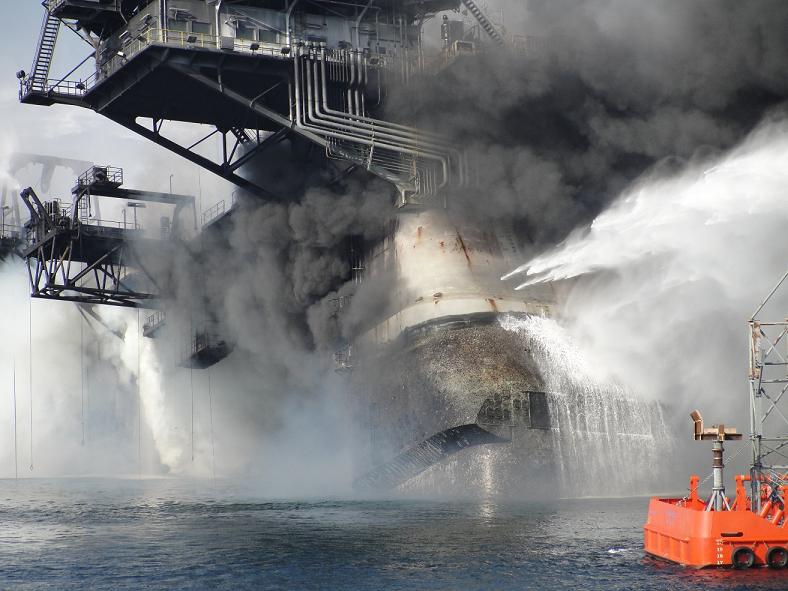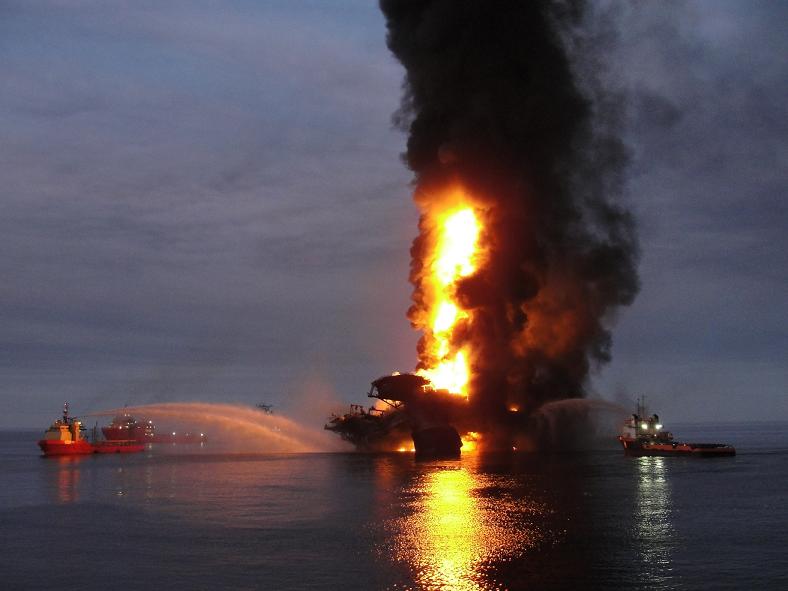On the same subject: the National Geographic channel will broadcast on June 8 at 21:00 a film shot in the first 36 hours of the oil spill and the attempt to prevent the spill that became one of the worst in history

The University of Texas prepared a three-dimensional model of the oil spill in the Gulf of Mexico with the help of a supercomputer
The University of Texas at Austin prepared with the help of a supercomputer a XNUMXD model of the oil spill in the Gulf of Mexico, which is increasingly becoming the largest ecological disaster in the history of the United States. The National Institute of Sciences assigned a million hours of work to the supercomputer of the Center for Advanced Computing at the university, with the goal of helping to predict the path of the oil spill.
Two researchers from the University of Texas - Clinton Dawson and Gordon Wells - are helping the personnel of the Marine Pollution Monitoring Department at the National Sea and Atmospheric Administration to predict the progress of the spill. The researchers adapt a model called Advanced Circulation, which was developed in the XNUMXs to map the formation of hurricanes, to track the path of the leak in the Gulf of Mexico. According to Wells, this is the first time the model has been used for this purpose. The project also involves researchers from the University of North Carolina and the University of Notre Dame, where Johannes Westrink, who prepared the original model, serves as professor.
Using this model provides several advantages over using existing leak tracking models, Wells noted. According to him, the existing models are only two-dimensional, and represent only the currents on the surface of the ocean, while in the Advanced Circulation model, many more geophysical variables are taken into account, such as wind and wave components as well as river estuaries. The model is also more detailed and provides a more detailed picture of the area affected by the leak.
Many government agencies in the US, including NASA and the Department of Homeland Security, have contributed technologies that help the Gulf cleanup project, which is now in its fifth week - since April 20, the day an explosion occurred at the BP oil well. Eleven people were killed in the explosion and tens of millions of liters of oil have already flowed into the sea, in an ecological disaster that experts estimate is the worst in US history. The spill has already reached the southern mouth of the Mississippi River, where investigators are tracking it. Wells estimates that the project may last until the end of the year.
Rare photographs of the fight against the oil spill - at National Geographic

Never-before-seen footage from the first 36 hours of the oil spill disaster will be revealed for the first time on the National Geographic Channel.
The images include scenes from the burning drilling rig that sank, the early firefighting operations, the rescue efforts of the US Coast Guard and moving eyewitness accounts immediately after the explosion.
On April 20, 2010, a distress call came in reporting an explosion on board the deepwater drilling rig "Horizon". The first fatal call triggered an emergency response to save the rig from a deadly flame, to save the crew members and to try to prevent an oil leak, and the environmental disaster that followed. It was the first 36 hours before we learned of the scale of the disaster as we know it today.
Now, the National Geographic Channel is releasing a first-hand account and footage of the first 36 hours after the explosion, as told and photographed by those who were there.
The exclusive footage was taken by the US Coast Guard, the National Geographic Channel production team and the rescue company that was on the scene, as well as interviews with eyewitnesses and an in-depth analysis of the rig.
In the video, the rig is seen covered in flames, local ships are spraying water on the burning rig to block the flame and weaken it. We will also see the sinking of the rig into the tombs. Coast Guard crews talk emotionally about the search for missing crew members, and teams of sailors and engineers discuss attempts to fight the fire in the heart of the sea and save the rig - to no avail.
"I could see the light of the burning rig from a distance of 140 km," says Lieutenant Lim from the Coast Guard. "I knew it was something big... like seeing hell on earth," added Kurt Patterson, a member of the rescue team that tried to save the sinking rig and the injured crew, "Since Hurricane Katrina, I haven't had to take care of so many people at the same time..."
Salvage experts describe their experience after a desperate job to save the vessel and watch it sink. "When you lose a vessel, it is a sad moment. You feel the loss, you feel the failure...Unfortunately for us, we fought a lost battle in advance."
Finally, the National Geographic channel interviews 23-year-old survivor Chris Choi who says: "I thought to myself that we were all dead...I didn't know if I was the only person left on the rig."
"It's something I'll never forget, images burned into my head. We gathered in a large group and realized that 11 guys were missing. We continued to pray that someone would find them."
Then at 22:00, the program "Seconds from a disaster: an explosion in the North Sea" will be broadcast, which also deals with an explosion that happened at an oil drilling rig.

5 תגובות
No one thought to practice an oil leak from a drilling at a depth of 1500 meters? Now they are looking for something to do with themselves.
Second, we spent 2012 and didn't die, it's better than I think
Great power brings with it great responsibility, the message is the same for all humanity
Where have you been in the last 10 years .. we are in 2020 ..: )..
A spelling mistake happens..
The oil spill at the British Petroleum drilling rig in the Gulf of Mexico, April 20, 2020?